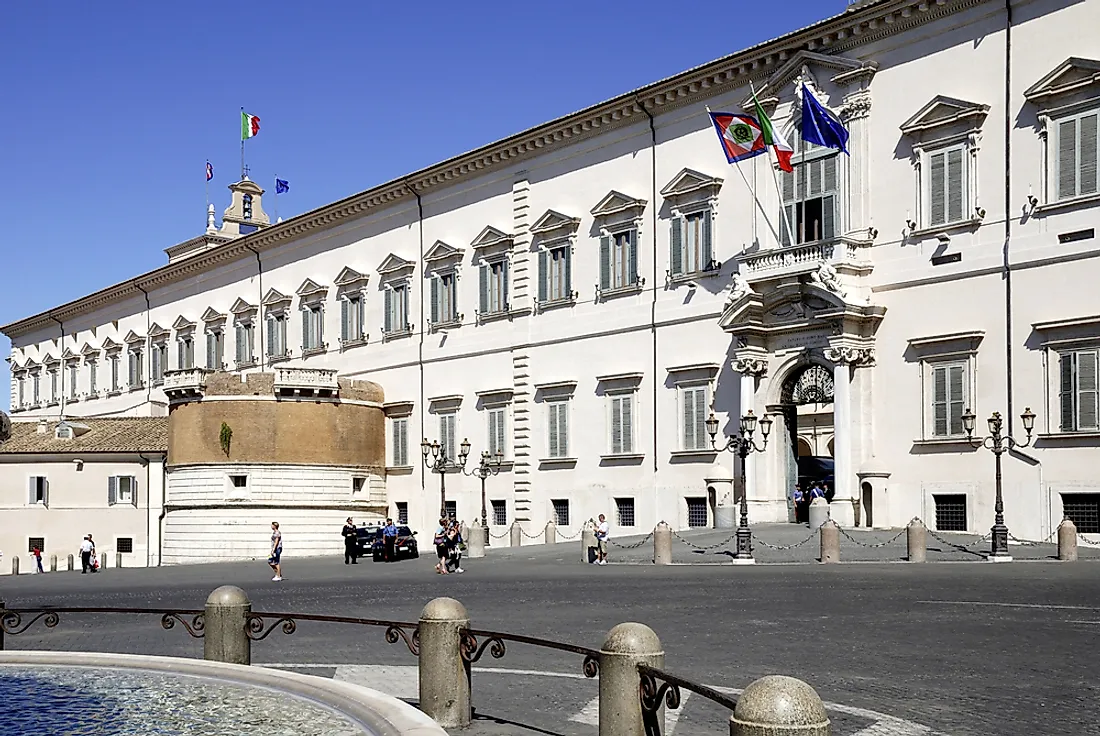Where Does The President Of Italy Live?

The Quirinal Palace is one the official residences of the Italian President together with Tenuta-di-Castelporziano and Villa Rosebery. It is a historical structure that is situated on the Quirinal Hill in Rome. The Quirinal Hill is the tallest hill in Rome which is located in the northeastern parts of the city center. The palace has housed four Italian kings, thirty Popes, and twelve Italian presidents. Quirinal Palace is the world's ninth-largest palace which occupies an area of about 0.0427 sq miles. The building was picked by Napoleon to be his home when he was the Emperor. Mademo Carlo designed the palace's Great Chapel while Domenico Fontana designed the façade. The building has unique gardens that were laid out during the seventeenth century.
History Of The Quirinal Palace
The current site of the President's residence has been in use since the Roman era. The Romans constructed several temples for their deities from Quirinus to Flora. Being the tallest hill in Rome, the region became a popular place for the Roman ruling class who constructed their villas on the mountain. The last Roman Thermae was built on this site during Constantine's reign. Pope Gregory XIII selected this site because it was far away from the stench and humidity of the Tiber River. The place was initially occupied by a small villa which was owned by the House of Carafa. Pope Gregory commissioned Mascherino Ottaviano to construct a palace with an inner court and parallel wings. The structure was never completed since the pope passed away in 1585. The structure built by Ottaviano is still visible in the northern parts of the court, particularly the double loggia portico that is topped by a panoramic Torrino.
Pope Paul V commissioned the finishing of the palace's main building during the seventeenth century. The building served as the papal conclaves in 1846, 1831, 1829, and 1823. The Quirinal Palace served as the pope's home and housed the central offices of the civil government of the State of the Church until 1870. After the Papal-states were overthrown in 1870, Rome became the capital of the Italian kingdom. The Quirinal Palace became the Italian king's official residence, although various monarchs lived elsewhere and used it for state functions only. Italy abolished the monarchy in 1946, and the palace became the official workplace and residence of the Italian presidents although some presidents like Sandro Pertini lived in his Roman home.
The Impressive Design Of The Quirinal Palace
The palace has over 1,200 rooms including the Yellow Hall, Augustus Hall, the First-State Room, and the Pauline Chapel which are housed in the main building. The Quirinal gardens have been changed over the centuries depending on the needs and tastes of the papal court. The gardens preserve the unique coffee house that was used as Benedict XIV Lambertini's reception. The popular water organ which was built by Barthelemy Formentilli lies on the palace's garden. The water organ has a single keyboard, and it is fed by a waterfall. The garden occupies about 10acres. Below the gardens, there is a trap door which leads to the excavation site which archeologists unearthed the remains of the god Quirinus temple.











